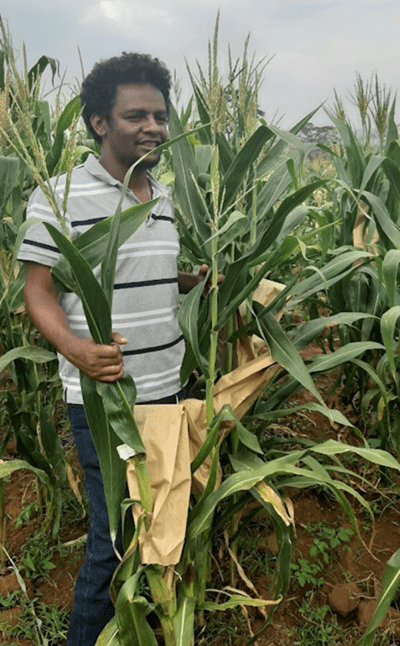

Using advanced analytics to improve selection accuracy for yield in resource-limited hybrid maize breeding programs, TropAg
October 17, 2022
The Crawford Fund’s Queensland Committee has again partnered with the TropAg International Agriculture Conference to assist 10 young researchers from developing countries attend and present their science at this international conference which will be held in Brisbane from 31 October to 02 November 2022.
Successful candidates were chosen by a selection panel made up of representatives of The Crawford Fund and the TropAg conference organisers, based on submitted abstracts of their research.
In the lead-up to the conference we will be publishing short blog posts written by the young researchers about their work. Here is the fourth blog.
By Tolera Fufa, The University of Queensland
 I am excited to receive a scholarship from the Crawford Fund to present my research at the TropAg2022 conference. I am currently a PhD student at The University of Queensland. Before starting my PhD study, I worked as a maize breeder at the Ethiopian Institute of Agricultural Research (EIAR). I obtained my BSc in Plant Sciences from Hawassa University, Ethiopia, MSc in Plant Breeding from Haramaya University, Ethiopia, and Master of Agriculture (MAg) from The University of Sydney, Australia.
I am excited to receive a scholarship from the Crawford Fund to present my research at the TropAg2022 conference. I am currently a PhD student at The University of Queensland. Before starting my PhD study, I worked as a maize breeder at the Ethiopian Institute of Agricultural Research (EIAR). I obtained my BSc in Plant Sciences from Hawassa University, Ethiopia, MSc in Plant Breeding from Haramaya University, Ethiopia, and Master of Agriculture (MAg) from The University of Sydney, Australia.
My interests range from improving crops for biotic and abiotic stress tolerance to employing advanced statistical methods applied to crop improvement to enhance the rate of genetic gain in crop breeding programs.
Genetic studies in crop improvement programs rely on the phenotyping of important agronomic traits in multi-environment trials (METs) to estimate genetic effects. The accuracy of the estimates of these genetic effects impacts the genetic gain per breeding cycle in any crop breeding program. The aim of my PhD research is to improve the efficiency of selection in hybrid maize breeding in Ethiopia through advanced statistical models.
In Ethiopian maize breeding programs, maize grain yield in breeding experiment plots is measured as a fresh weight of maize ears, which includes the grain and cob. The weight of grain from each plot is estimated as a standard proportion of grain to total ear weight using a shelling percentage of 80%. This approach assumes that there is no genetic, environment or genetic by environment interaction in shelling percentage which, if present, would contribute to slower rates of genetic gain for grain yield. Furthermore, the METs are planted to single-row plots due to the limitations of seed land and the cost of phenotyping.
My research investigated that there are genetic variances for both cob weight and shelled grain weight across environments. The covariance between the two traits also varies across environments indicating the use of a constant relationship between shelled weight and fresh weight for every genotype biases grain yield predictions in METs. And we recommend advanced statistical methods that can be used to predict shelled weight from fresh ear weight for each genotype in each environment. This can be applicable to any resource-limited maize breeding program where it is challenging to shell every plot in METs.
Furthermore, we demonstrated that joint modeling of field spatial variability and inter-plot competition in a linear mixed model framework improves the accuracy of selection in single row planted METs.
These statistical methods can be used for experimental genotype evaluation trials to accurately predict the genetic merit of the genotypes under evaluation in resource-limited maize and other crop breeding programs.




